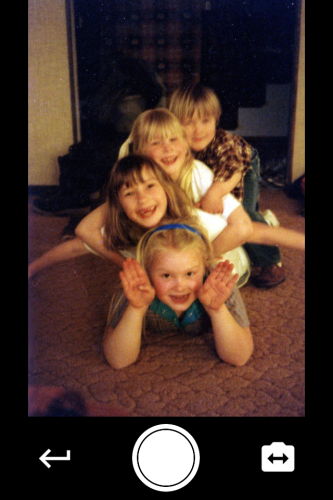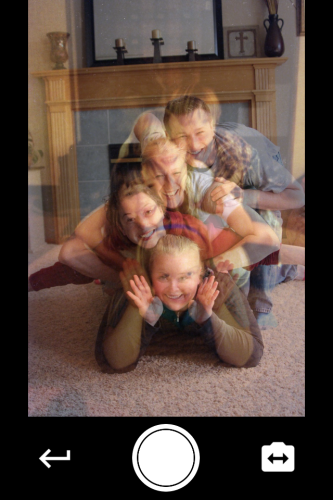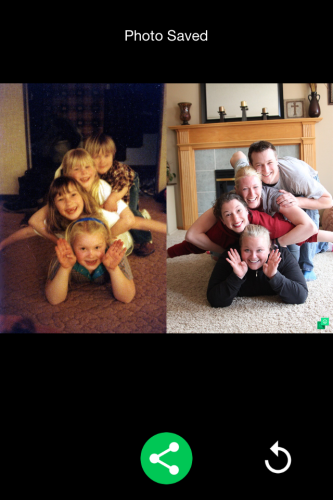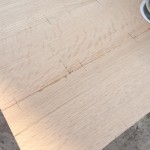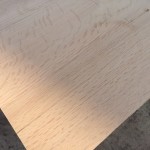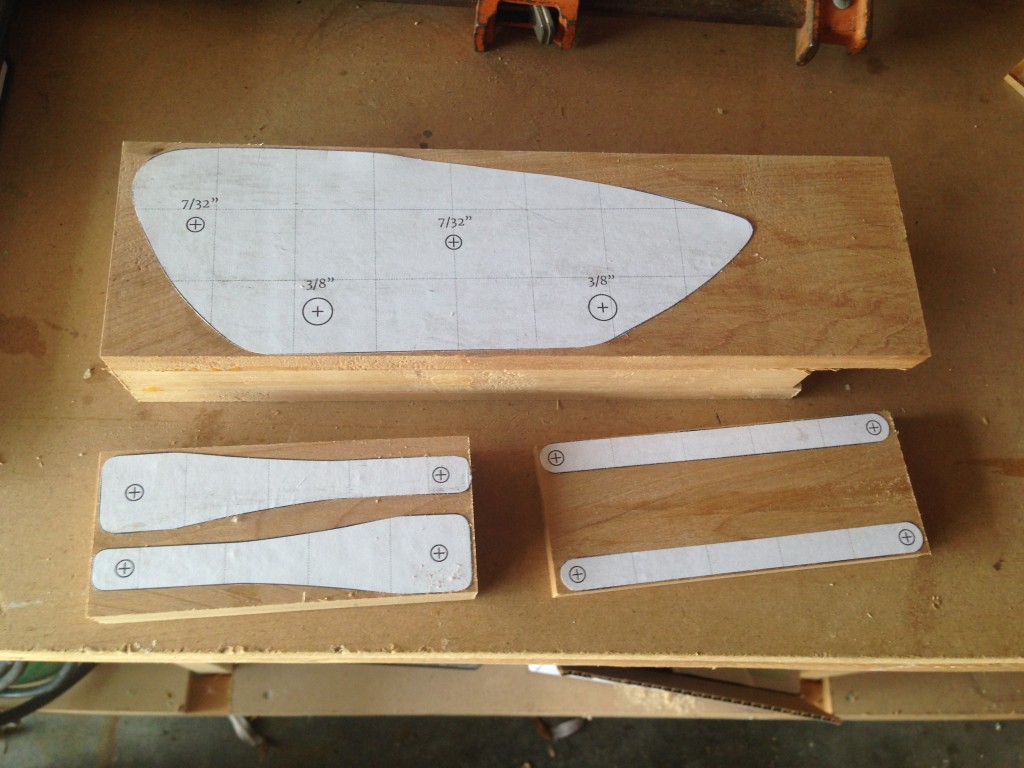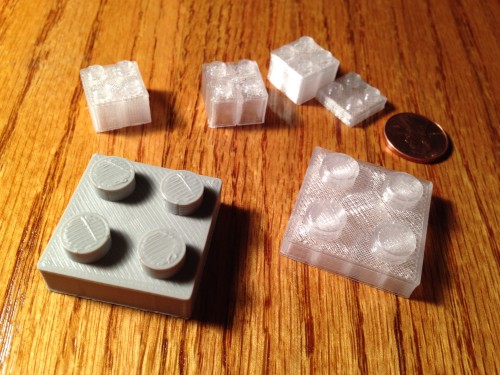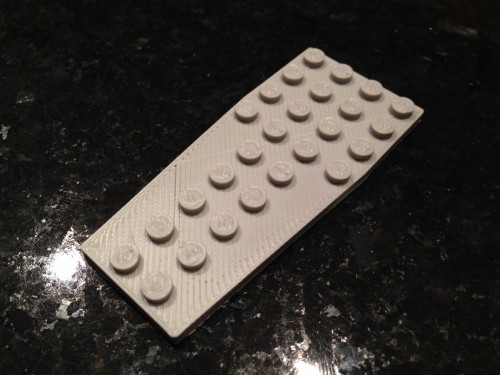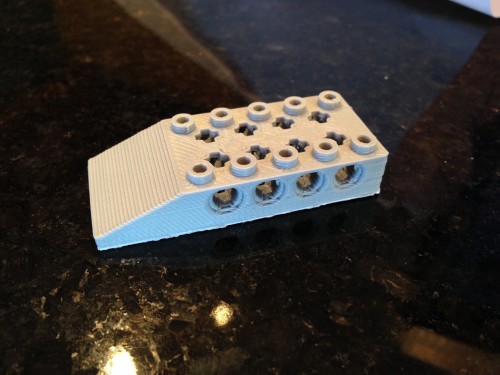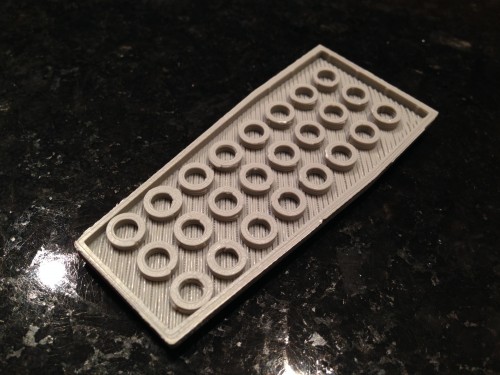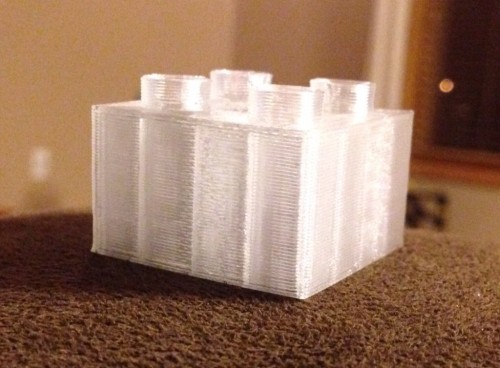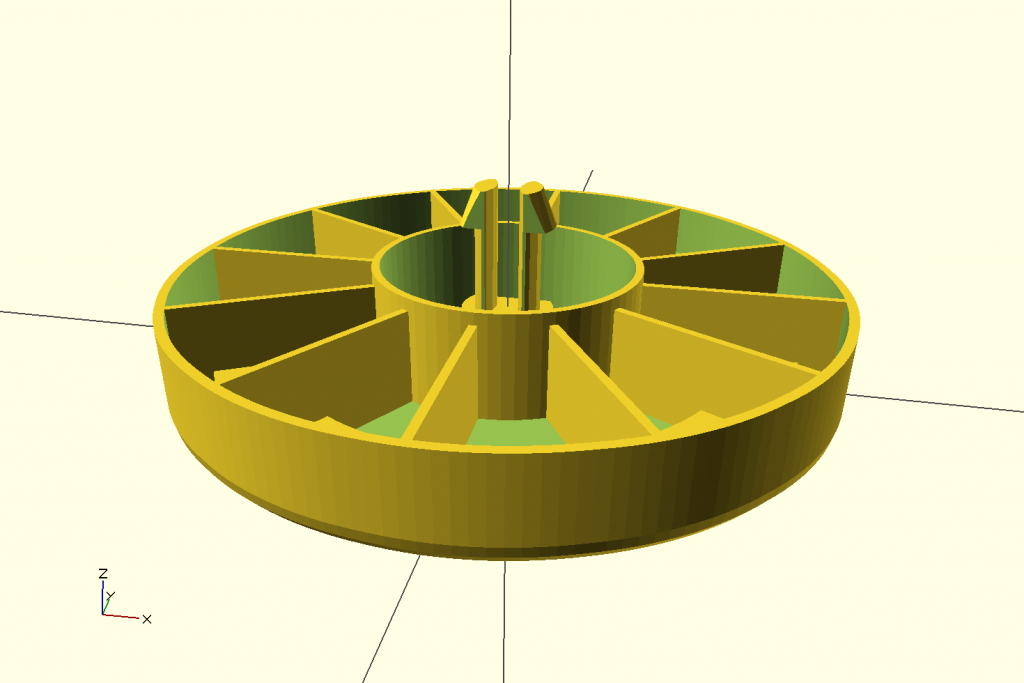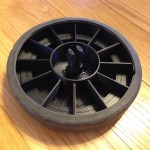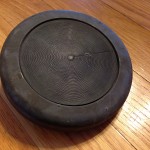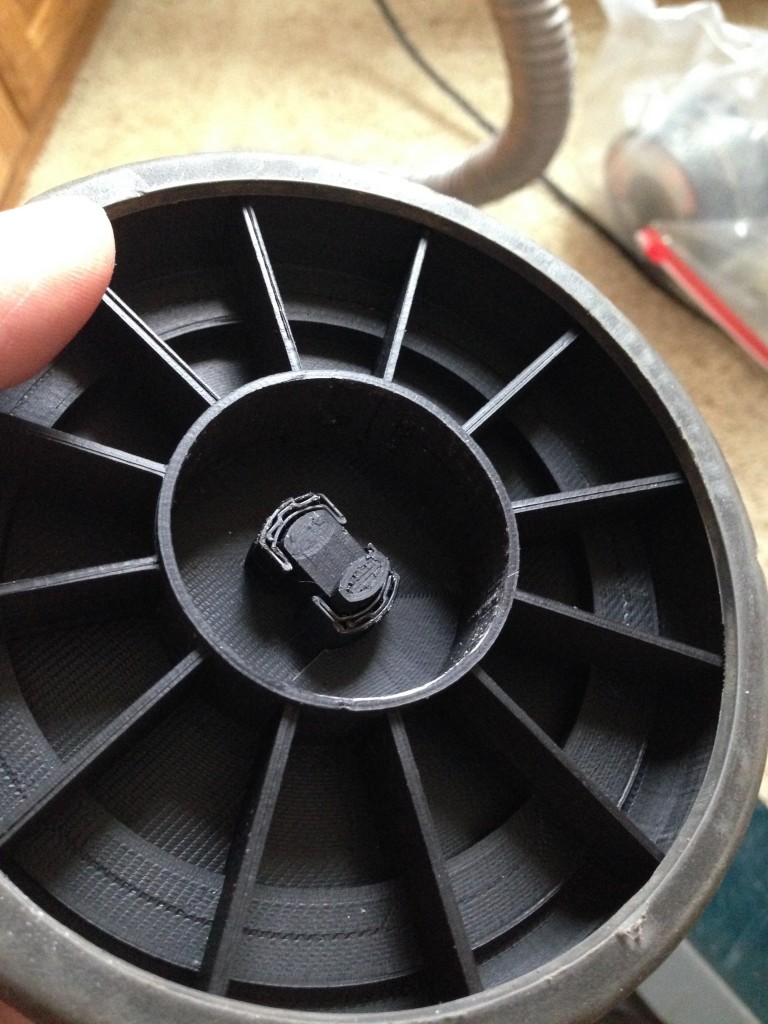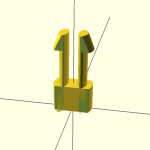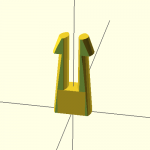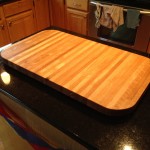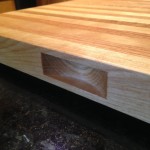Before we moved, we sold our kitchen table. We had bought it new a few years ago; it was expensive, but it got so thoroughly scratched and dinged up (and it couldn’t be refinished, since it was basically a plasticky veneer over fiberboard) that we didn’t want to bring it with us. So we sold it, but we didn’t buy a replacement; the plan was that after we moved, I’d build us a table that would last.
I opted for a farmhouse-style table with breadboard ends for two reasons: I had never done breadboard ends before and I wanted to try it, and also Christina liked that style best. I designed the project in OpenSCAD first, which really helped with visualizing the joints and knowing how much wood to buy.

(The files are all on GitHub. It will even print out a cut list in the console when you render it.)

The supplies: four legs from Lowes and S3S lumber from a local lumberyard. (S3S means “surfaced three sides;” the top and bottom have been planed smooth, and one edge is smooth and square. Anything you’d get from Home Depot would be S4S, but at as much as 4x the cost.)
I chose red oak for the top, since I’m familiar with it and it was reasonably priced. It’s a nice hard wood that should stand up to the abuse that a kitchen table gets. I did splurge and get the quarter-sawn boards which cost a little more, but they display some really pretty grain patterns. Also, they don’t expand and contract as much with humidity as the flat-sawn boards do; that’s a plus.
For the apron (also known as the skirt, also known as the base, also known as “those boards under the top”), I chose poplar. I chose poplar because I asked the guy at the lumberyard what I should choose and he said poplar.

I cut the apron boards by hand because I couldn’t find the sled for my table saw. Also, you’re not a real woodworker if you use anything but hand tools. Just kidding I love power tools.

I beveled one edge of each of the table legs so that they’d fit more snugly with the corner brackets.

A couple of quick 45º cuts on the table saw gave me the corner brackets that join the apron edges together and connect the apron to the legs.

Here are all of the apron pieces cut to length and ripped to width. Take note that there are four boards in the left stack. This will be relevant later on.

I cut dadoes with my table saw in the long apron pieces to accept the stretchers (the long boards that go inside the middle of the apron). They’re called “stretchers” because they played basketball in high school.

The aforementioned dadoes.

Dado closeup. Notice how they’re great.

I decided to make the table longer than I had initially planned, and my trip back to the lumberyard yielded this 8″ wide board with a neat stripey pattern that I knew would look great as the breadboard ends. Batman’s appearance in the previous and next pictures is courtesy of my sons Gabriel and Gideon.

This is the initial fitting of the apron. I’ve said it before and I’ll say it again: I love my 90º clamps.

The stretchers were attached with screws after being fit into the aforementioned aforementioned dadoes.

This is how I cut the pocket holes in the corner brackets. I guess I could have used my pocket hole jig, but that didn’t occur to me until just now.

The glued and screwed apron. Remember how there were four stretchers in the pile earlier? When I was cutting the dadoes, I miscalculated and only cut three, so one stretcher didn’t make the team. Sorry stretcher. Maybe try out for cross-country instead.

I used threaded inserts in the legs in order to make them removable, since this table will be traveling with me for the rest of my life.

The base of the table, “base”-ically ready for paint…

…but not before I cover the screw holes with oak plugs and sand them flush. It’s the little things.

A closeup of the corner brackets. See how the beveled edge on the leg helps the fit.

Here are the boards I chose for the top, cut to length, but not yet ripped to width. Those gaps between them will disappear by the end of the process.

After ripping the boards to even widths, I cut slots for the biscuits that I used to join them together. “Biscuits” are just little cardboardy ovals, much like you might be served in a hospital cafeteria.

You can never use too many biscuits. The only reason I didn’t use more is because our region is in the middle of a biscuit shortage right now.

The middle of the tabletop, dry-fit. See, those gaps are starting to disappear.

This is the glue-up. The 2x4s help keep the boards flat while the pipe clamps squeeze them together. (The technical terms for the 2x4s are “cauls.” ? The More You Know ?
Here’s a before-and-after showing how the tabletop looked immediately after being glued and then again after some light sanding. The glue disappears entirely, and the boards are so close together, you can’t easily see the seam.

Some sawdust mixed with wood glue filled any larger gaps. After sanding, you couldn’t tell that a gap had existed.

The breadboard ends need a groove (aka “mortise”) to accept the tenon (aka “thing sticking out”) from the middle of the table. I couldn’t get my router working, so I tried to cut the mortise in the breadboard end with a drill press and Forstner bit. It technically worked, but it was a little messy.

I got my router working and used it to shave down the thickness of the tenons, which were cut out with a jigsaw.

Mortise, meet tenon. You two will be working together very closely for a long time.

This dry-fit felt so good.

These pins are what hold the breadboard end on the table. The center pin is glued in, but the outer ones just kind of float, since they need to be able to move from side to side as the wood in the table expands and contracts.

This little peg went to market…

This little peggy stayed home.

The completed table top, ready for sanding and stain.

I flipped the top over and stained the bottom as a test run (and also since the bottom needed to be stained).

The legs were painted a color called “Creamy,” which coincidentally is the same color as my actual legs.

After painting the apron, I cut slots in it with a biscuit joiner to accept the tabletop fasteners. This was done late at night by the light of the moon, which was actually just sunlight that the moon reflected. (? The More You Know ?)

These fasteners allow the tabletop to be attached to the apron but still move from side to side as the wood grows and shrinks throughout the year.


Here’s the top of the table after sanding but before staining. The sanding process took about three hours and included sanding the entire top to 80, 120, 150, and 220 grits.

The top was stained with Varathane’s “Kona” stain color, but it looks more like Kailua to me.

I really like how the stain brought out the stripes in the breadboard ends.

The top after three coats of semi-gloss polyurethane. I liked the table so much at this point, I decided to replace the top of my workbench with it.

Pretty.

Stripey.

The finished product. The total materials cost was around $300, and my time invested into it was about 60 hours.
The return on that investment will be infinite: instead of just being a piece of furniture that we bought to eat at, this table is now (and will be) a part of all the memories we’ll make around it as a family.



